Solving the grandest of challenges
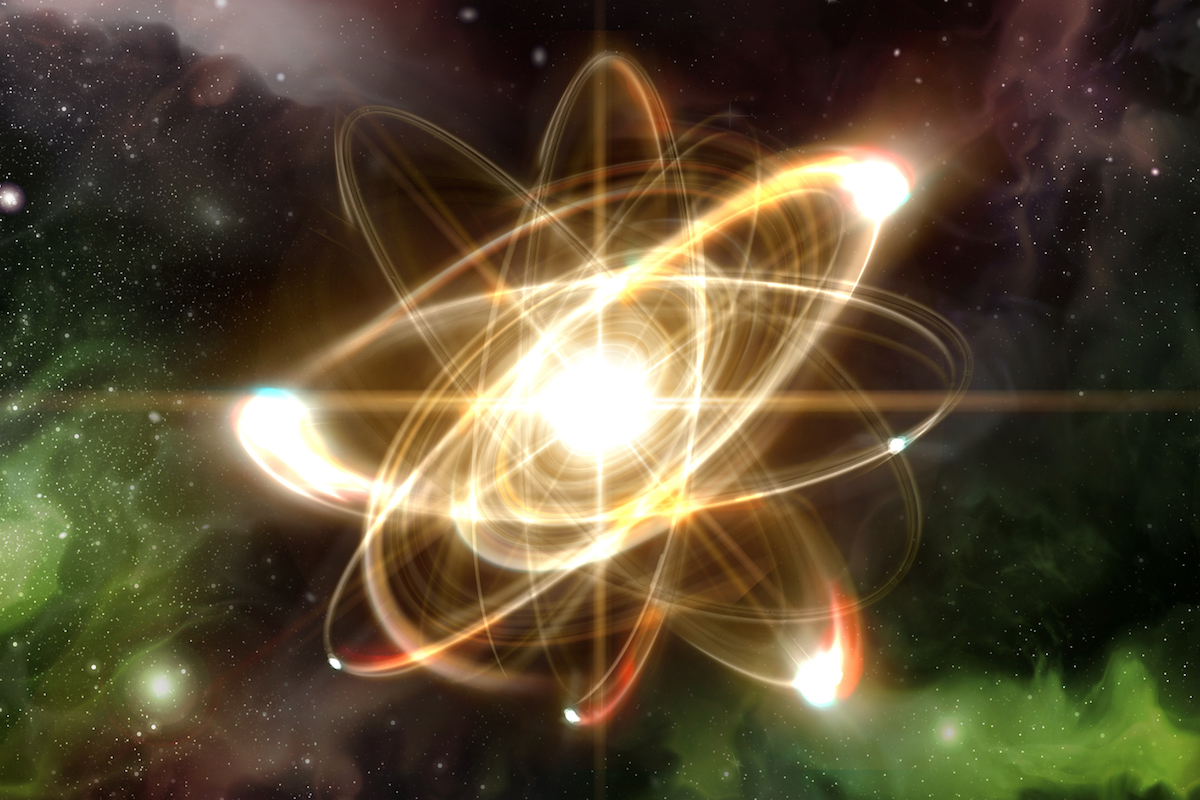
William Tang, a principal research physicist at the Princeton Plasma Physics Laboratory at Princeton University, recently spoke on campus about powering the world through nuclear fusion. Image courtesy of Shutterstock.
-By Nicholas Demille, KAUST News
Around the world, scientists, researchers and engineers seek to develop sustainable alternatives to the burning of fossil fuels. Some explore the kinetic energy of wind, gravity or water. Others capture excited electrons using photosensitive materials. William Tang, a principal research physicist at the Princeton Plasma Physics Laboratory at Princeton University, wants to power the world using the chemical reaction that stars run on—nuclear fusion—and he believes deep learning is a key.
Fusion has been described as the holy grail of power sources. It is the sister process to fission, or the splitting of atoms—colloquially referred to as nuclear power—though in truth, both are "nuclear" sources.
Fusion is clean and, unlike conventional nuclear power, does not result in a radioactive spent fuel byproduct. It is also considered much safer than the fission technologies that lie at the center of the meltdown incidents at Fukushima, Three Mile Island and others. However, recreating stellar conditions on Earth is an exceedingly difficult undertaking.
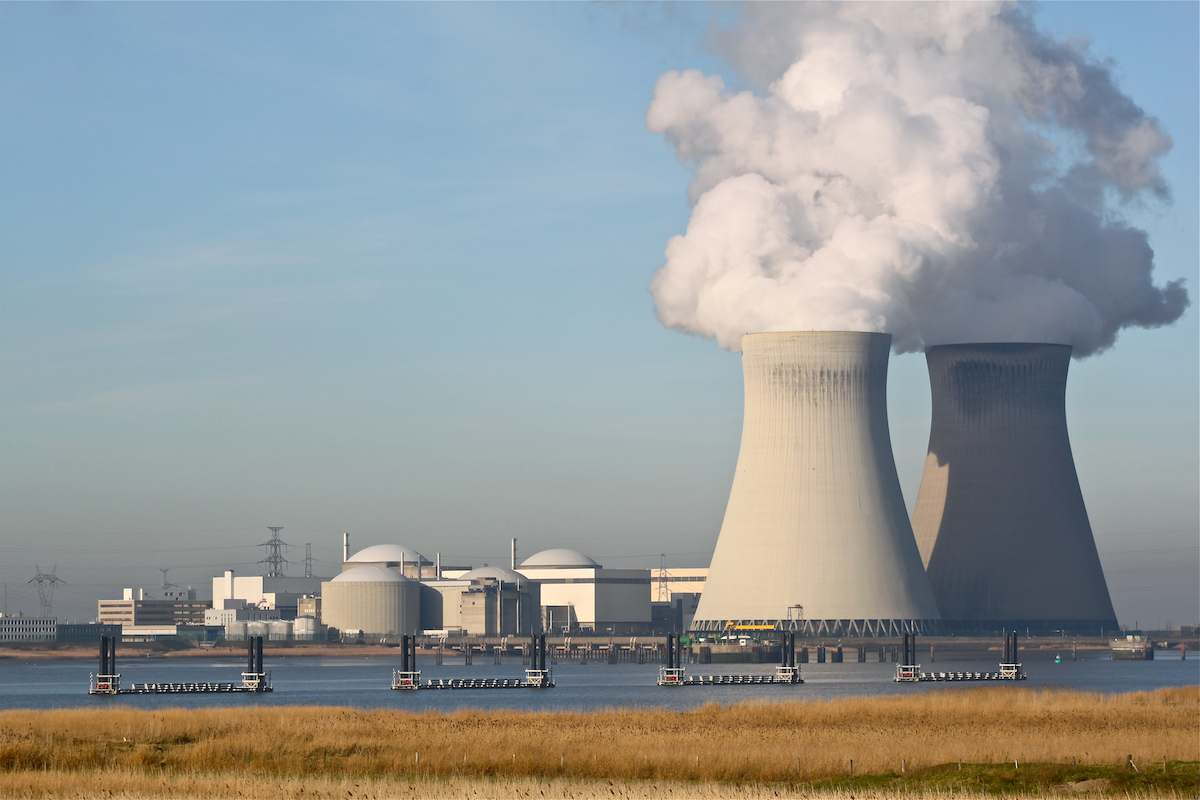
Nuclear fusion is 'clean' and is considered to be safer than the fission technologies that resulted in the nuclear disaster at Fukushima Daichii in Japan, for example. Image courtesy of Shutterstock.
Going to extremes
The core of our sun reaches around 15 million degrees Celsius. It fuses about 600 million tons of hydrogen into helium every second, converting 4 million tons of matter into energy. It's the living embodiment of Einstein's most famous equation.
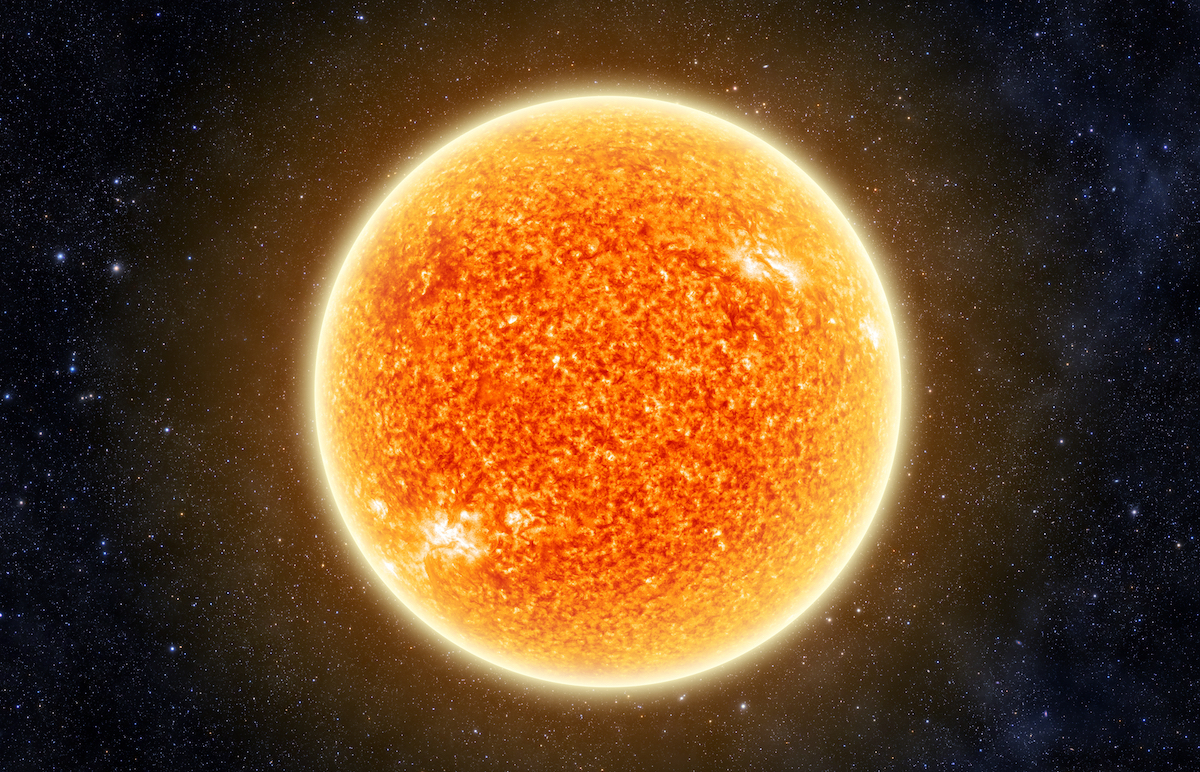
The sun's core is at an astonishing temperature of around 15 million degrees Celsius. Image courtesy of Shutterstock.
Unlike ice, water and vapor—the solid-liquid-gas paradigm we're taught in secondary school—plasma isn't, generally speaking, relevant to daily life. It's the fourth state of matter. It's what happens to gases under extreme heat and temperature conditions such as inside of stars, in lightning and even visible in the magnetosphere as the aurora borealis.
In the 1950s, Soviet physicists Igor Tamm and Andrei Sakharov invented the apparatus that makes containing a plasma possible. The device, called a tokamak, suspends the superheated ionized gas inside a donut-shaped containment vessel, which will be, in the case of the International Thermonuclear Experimental Reactor (ITER), the largest magnets ever created.
The creation of a super-hot plasma levitating in an obscure, donut-shaped chamber surrounded by the largest magnets ever built may seem like an improbable way to create power.
"Fusion is certainly the most difficult way from an engineering perspective to generate electricity," said KAUST Professor David Keyes, director of the University's Extreme Computing Research Center.
Keyes hosted Tang when he visited KAUST. The two are longtime acquaintances, and they were colleagues in their work for the U.S. Department of Energy on the topic of fusion energy research.
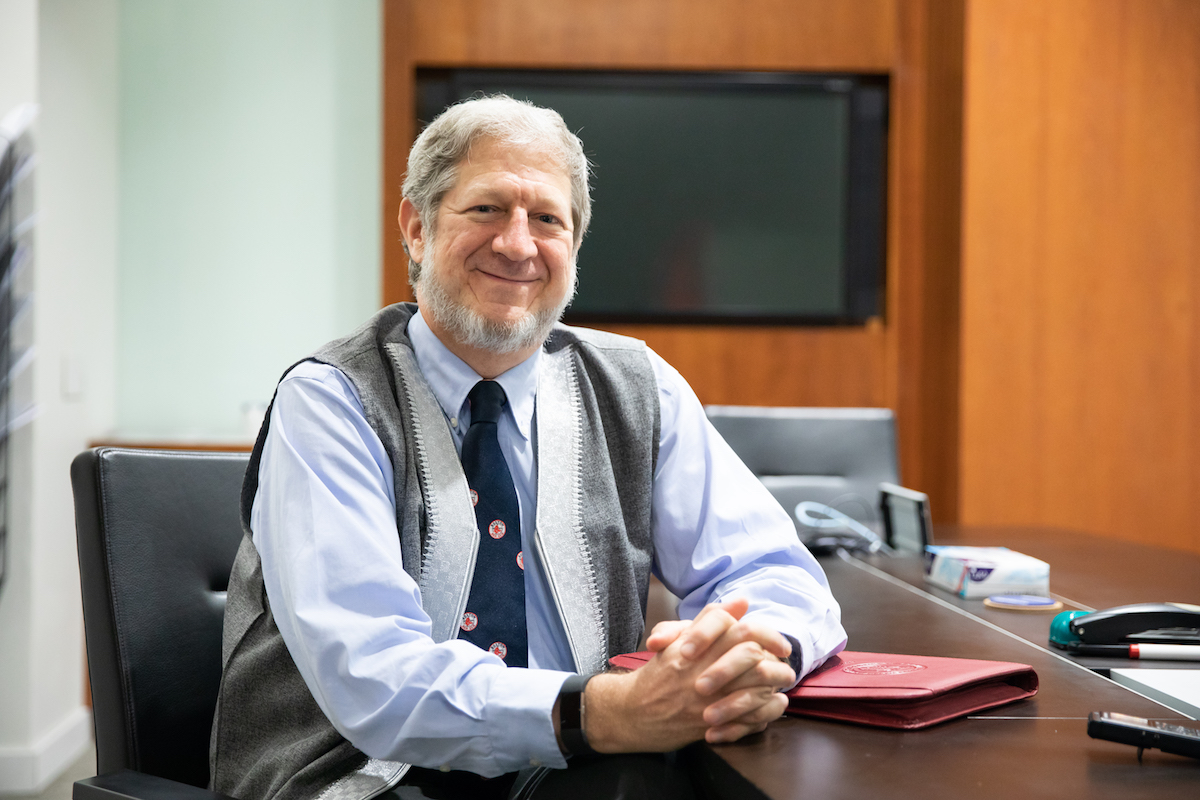
KAUST Professor David Keyes (pictured), director of the University's Extreme Computing Research Center, is a longtime acquaintance and former colleague of William Tang, a principal research physicist at Princeton University. File photo.
"Fusion is a real-time application," he continued. "Google is not. While users want a fast search, Google can take a week to figure out the rank order of links that an individual user should see. Google can make a mistake...[b]ut with a reactor, you have to decide in real-time if an instability is developing and you have to be very accurate. So, it's stimulating for data science to have applications like this. It really raises the bar for what data science has to do."
Keyes recently delivered the opening address at a big data conference put on by the Institute for Pure & Applied Mathematics—an NSF-funded institute at UCLA started by KAUST President Dr. Tony Chan in 2001. The topic of Keyes' talk was the convergence of big data and extreme simulation, something Tang spoke about at length during a discussion in the KAUST studios.
Since the early 20th century, scientists have been chasing fusion because it has an almost unimaginable capacity to release energy. In a fusion future, for example, half a liter of water will be all the hydrogen needed to power a family home for one year.
Fusion power, according to Tang, will involve many things other than plasma, tokamaks and multinational infrastructure projects such as ITER in southern France. Fusion power will come to fruition, according to Tang, thanks to help from big data, AI, extreme simulations and even from supercomputing resources that have yet to be invented.
"In many cases, we're not yet moving from prediction to control. This is embryonic," Tang said. "I'm personally very excited about the deployment of our predictors onto a real live machine."
In defiance of nature's laws—at least on Earth
Physicists like to joke that fusion is the power of the future, saying, "It's only 30 years away." The punchline, of course, is that it has been "only 30 years away" for nearly a hundred years. Tang, aware of this irony, has still dedicated the better part of his scientific career to helping make this dream a reality.
"If you think about aviation and you think about what they were able to achieve at Kitty Hawk...the plane flew!" Tang said, referencing the town in North Carolina, U.S., made famous for the first powered flights. "That was a big breakthrough, and you can see what has happened over the course of time with respect to aviation. But, had you interviewed the Wright brothers at that time, they would not have been able to tell you, 'We're clearly going to exceed the capabilities of trains and boats.'"
Keyes and his team have made significant contributions to the libraries of open-source code used to run and optimize the performance of supercomputers around the world tasked with solving scientific problems, including those related to plasma physics.
"Some physics happens faster than what we can predict will happen. Computing is ready today to do a lot of things but not to predict in real time what will happen to many systems," Keyes said. "For civilian airliners, you can pretty much design them off-line on a computer, but tracking what happens to the turbulence in a reactor is still taxing on today's computers. The turbulence is important because what you want to do in a fusion reactor is set up a strong gradient—very hot in the core, very cold on the wall—turbulence tends to wipe out that gradient. It tends to bring everything to a common middle where you don't have containment quality."
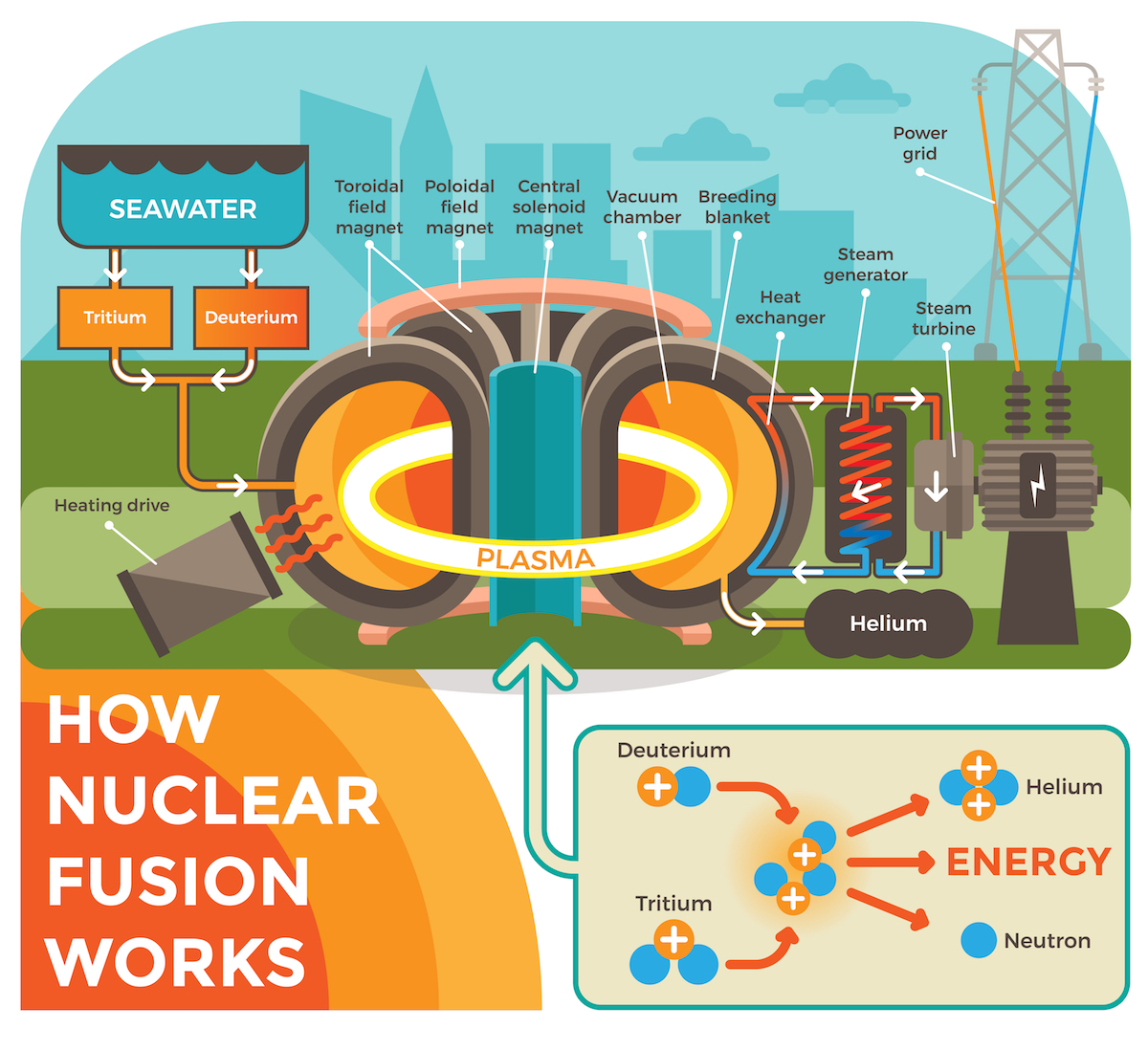
This graphic describes the process of nuclear fusion. Image courtesy of Shutterstock.
"You are defying the tendency of nature to come to equilibrium," he added.
However, there is something quite captivating about the pursuit of fusion as a power source. The nuclear fusion that takes place in stars throughout the universe is believed responsible for creating every element above hydrogen on the periodic table. To finally harness that power—the most prevalent source of energy in the cosmos—might well be humanity's next great leap forward, allowing us to solve our energy challenges and explore deeper into space than before.
Related stories:
- Building global cities
-
Pillars of the future
-
Laying the foundation for future cities
-
A safer nuclear future

